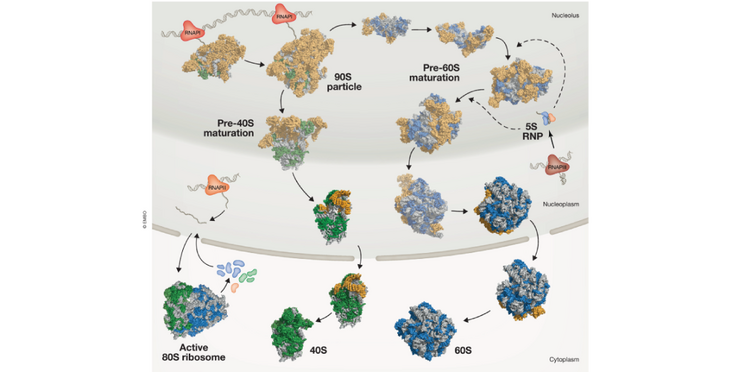The Kutay lab wrote a review on the complex process of ribosomal biogenesis and the plethora of factors involved in it, comparting the factors involved in yeast and humans. Their article "Ribosome biogenesis factors-from names to functions" has been published online in the EMBO Journal.
Abstract
The assembly of ribosomal subunits is a highly orchestrated process that involves a huge cohort of accessory factors. Most eukaryotic ribosome biogenesis factors were first identified by genetic screens and proteomic approaches of pre-ribosomal particles in Saccharomyces cerevisiae. Later, research on human ribosome synthesis not only demonstrated that the requirement for many of these factors is conserved in evolution, but also revealed the involvement of additional players, reflecting a more complex assembly pathway in mammalian cells. Yet, it remained a challenge for the field to assign a function to many of the identified factors and to reveal their molecular mode of action. Over the past decade, structural, biochemical, and cellular studies have largely filled this gap in knowledge and led to a detailed understanding of the molecular role that many of the players have during the stepwise process of ribosome maturation. Such detailed knowledge of the function of ribosome biogenesis factors will be key to further understand and better treat diseases linked to disturbed ribosome assembly, including ribosomopathies, as well as different types of cancer.
Read the Article in the EMBO Journal (Open Access)
Abstract, figure and title from Dörner et al. (2023) EMBO Journal published under a CC BY NC ND 4.0 license.
